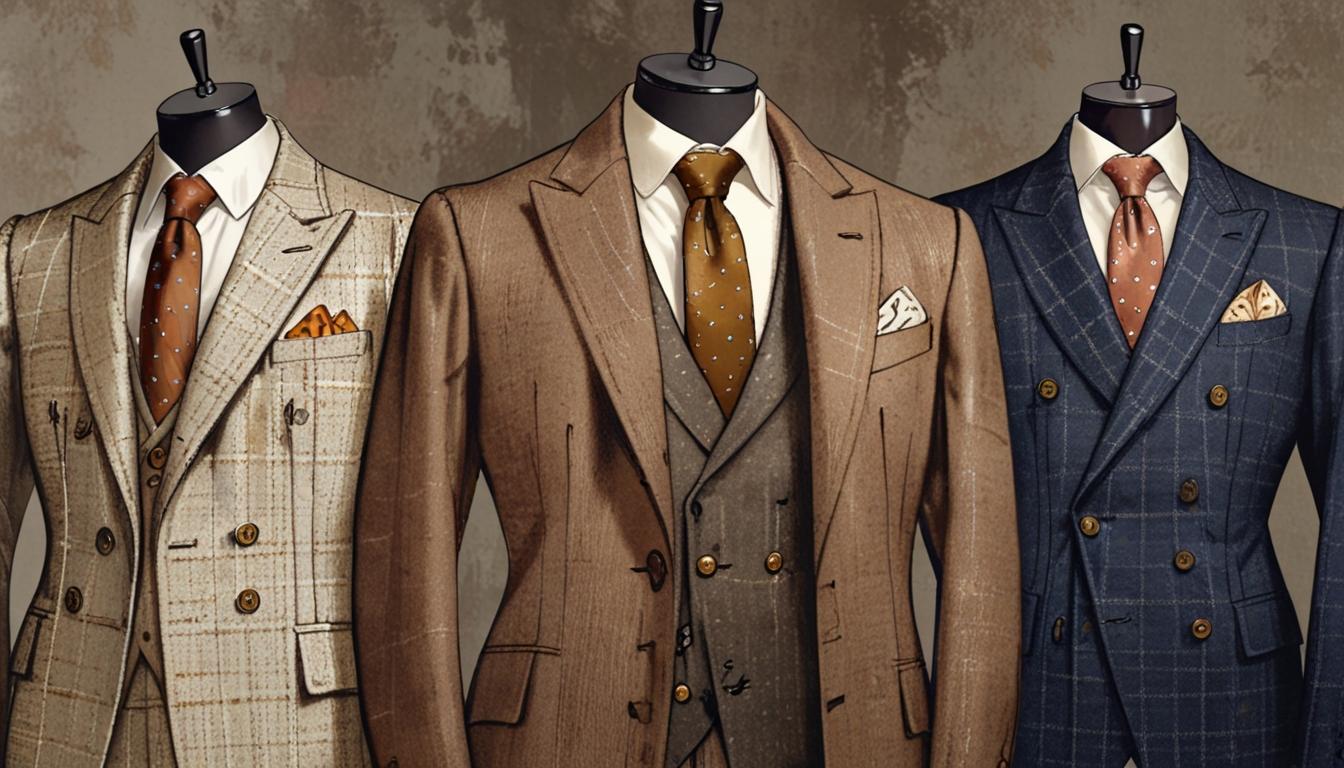A pair of jeans is like a canvas, waiting for your personal touch. You might find that the fit isn't quite right, leaving you with a garment that doesn't reflect your style. Whether it's the length, the taper, or the waist, knowing how to tailor them can transform your look entirely. But before you grab those scissors, there are some essential techniques and measurements you need to contemplate to achieve that perfect fit. Understanding these details can make all the difference in your tailoring journey.
Understanding Denim Fit
When it comes to understanding denim fit, you need to focus on key measurements like your waist, hips, thighs, and inseam. These measurements are essential because they determine how comfy and stylish your jeans will be. You wouldn't want a pair of jeans that feels like a straightjacket, right? Vintage jeans, in particular, can have inconsistent sizing, making accurate measurements even more important vintage characteristics. Different styles of jeans, such as skinny, straight, bootcut, and relaxed, change how the fabric hugs your body. For instance, skinny jeans will cling to your legs, while relaxed styles give you more breathing room. And don't forget about the rise—low, mid, or high—because that affects how they sit on your waist and hips. Finding the right rise can make all the difference!
Now, let's talk fabric. A blend of cotton and elastane usually provides that perfect stretch and comfort. You want your jeans to move with you, not against you. But here's a tricky part: sizing can be all over the place between brands. So, trying on multiple sizes and styles is a must if you want the best fit for your unique body shape.
Essential Tailoring Techniques
To achieve the perfect fit with your jeans, mastering essential tailoring techniques is key. You'll want to start with hemming. Measure the desired length, then cut off any excess fabric. Finish the hem with a straight stitch to keep it looking sharp—no one wants bunchy jeans! Additionally, consider using durable materials like denim to guarantee your alterations hold up over time, especially if you're working with vintage styles selecting the right jeans.
Next up is tapering. This process helps you create that sleek silhouette we all love. Turn your jeans inside-out, pinch the fabric around your calf and ankle, and mark it. Then, sew along those lines and re-hem for a polished finish. It's like giving your jeans a glow-up!
Don't forget about waist adjustments! If your jeans feel a bit loose, unpick the waistband, pinch out the excess fabric, and resew it. Just make sure those raw edges are hidden for a clean look—no one wants fraying threads ruining their style!
Using a thicker denim needle is a must when altering a pair of jeans. Overlocking or zigzag stitching those raw edges will help prevent any fraying, guaranteeing your alterations last.
And hey, if you're nervous about diving into this, practice on some old jeans first! It's a great way to build confidence without the fear of messing up your go-to pair.
Accurate Measurement Methods
Getting the fit right starts with accurate measurements. If you want your jeans to fit like a glove, you've gotta measure correctly. Grab a flexible measuring tape, and let's explore the details. First, wash your jeans before taking any measurements. This way, you account for any shrinkage, guaranteeing the tailor works with the final shape of the denim.
Here's a quick reference table to help you out:
| Measurement | How to Measure |
|---|---|
| Waist | Measure at your natural waistline, snug but not tight. |
| Hips | Measure at the widest point, around the fullest part of your buttocks. |
| Inseam | Measure from the crotch to your desired length while standing straight. |
| Thigh Measurement | Measure around the fullest part of your thigh to get that perfect upper leg fit. |
| Overall Fit | Check overall comfort and how the jeans feel when you move. |
When you're measuring your waist, make sure it's comfortable, not constricting. For your hips, don't forget the fullest part—that's where your jeans will hug you best! And, for inseam, standing straight is key. Trust me; you don't want any surprises when you sit down!
Taking accurate measurement methods is essential to guarantee your jeans fit just right. So, roll up your sleeves, measure twice, and let your tailor work their magic. Who knows? You might just end up with your new favorite pair!
Choosing the Right Jeans
Finding the right pair of jeans can feel overwhelming, but it doesn't have to be. First off, you've gotta think about the fit style that suits your body best. Are you into skinny jeans that hug your legs or something more relaxed? Maybe you prefer straight or bootcut styles? Each one can enhance your comfort and appearance in different ways.
Next, consider the rise of the jeans. Do you want something low, mid, or high-waisted? The right rise can flatter your waistline and balance your proportions like magic.
When it comes to denim fabric, you'll want to pick a blend that works for your lifestyle. A mix of cotton and spandex gives you that perfect stretch for comfort, especially if you're on the move.
Don't forget to measure your waist, hips, and inseam accurately. Sizing can be all over the place between brands, so getting these measurements right can save you from a world of alterations later.
Also, keep an eye out for specialty fits like petite or tall sizes. These can save you time on tailoring and make it much easier to find jeans that fit well right off the rack.
Finding a Skilled Tailor
Sometimes, the perfect pair of jeans needs a little help to fit just right, and that's where a skilled tailor comes in. Finding someone who knows how to tailor your jeans can make all the difference in how they look and feel. A good tailor will also be familiar with various techniques for tailoring denim skirts and can adapt those skills to your jeans. So, how do you find a reputable tailor who specializes in denim alterations? Here are some tips to guide you:
- Ask around: Seek recommendations from friends, family, or even check online reviews. A personal connection can lead you to a great tailor.
- Visit local shops: Check out alteration services nearby and ask how much experience they have with denim. You want someone who knows how to preserve that original hem and fading patterns.
- Look for quality tools: Make sure they use industrial-grade sewing machines. Techniques like chainstitching are key to achieving a durable finish on your jeans.
- Discuss the alteration process: Ask potential tailors about their fitting process. Will they provide fittings to guarantee you get the comfort and look you want?
Frequently Asked Questions
Can You Tailor Your Own Jeans?
Yes, you can tailor your own jeans! With the right sewing tools, measuring techniques, and knowledge of fabric types, you'll make DIY alterations, adjusting hem lengths and fit preferences to achieve your perfect style.
Can Jeans Size Be Altered?
Yes, you can alter jeans size for a better fit. Consider altering techniques like tapering or hemming, but remember denim care and fabric considerations. With the right sewing tools, you can achieve your style preferences through DIY alterations.
What to Do With Jeans That Are Too Big?
Got jeans so big they could double as a parachute? Try jean shrinking techniques, waistband modifications, and fit adjustment methods. Use denim alteration tools and DIY tailoring tips to achieve the perfect snug fit.
What to Tell a Tailor When Altering Jeans?
When you meet your tailor, discuss fit adjustments like waist size and hem length. Mention pocket placement and fabric type, and share your style preferences. This helps them use the right stitching techniques for your perfect fit.




